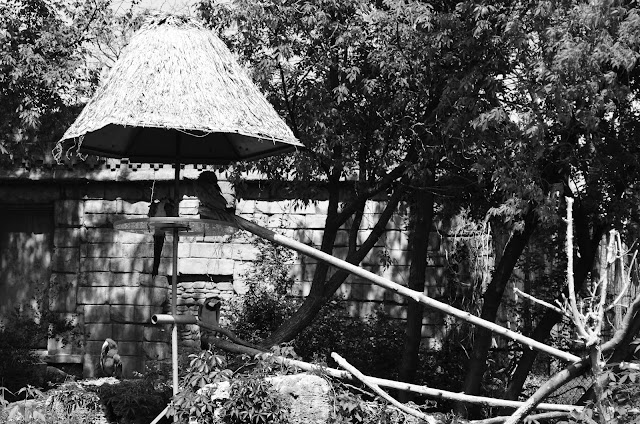“A photographer who made a picture from a
splendid moment, an accidental pose of someone or beautiful scenery, is the
finder of a treasure.” – Robert Doisneau
Every photograph records perhaps a hundredth of a
second. Take around one hundred photographs and you get about one second of
moments, one second of recordation of what happened. In order to make that one
second a significant one, all the right moments must be recorded at the right
time. That is why timing is everything. Robert Doisneau of Gentilly, France was
one of many to spend his life perfecting the art of timing to capture all the
right moments. His journey lead him to become a pioneer of photojournalism and
his street photography became icons for Paris and other photographers during
his time. His work is among the most recognizable of all French
photographers.
Doisneau captured life in Paris not the way it was, but the
way he wanted it to be like at all times. He saw Paris as the place of mingling
social classes, children roaming free of their parents, art, music and of
course, young love. His one of a kind photograph, Le baiser de l’Hotel de
Ville (also
known as The Kiss) was particularly famous with its representation of love in Paris. Although
this picture was set up, it is still so realistic and a deep sense
of passion and love can be felt. It may be even better than if it were a candid
shot. This photograph came to be an
international symbol of love in Paris. Although in reality, the couple only
stayed together for 9 months, the picture gave them an infinite look. it is
still one of the most iconic images of the 20th century and has lost none of
its romantic character. His photographs makes anyone love Paris and her people.
He makes one wish they lived in Paris in the duration of time he was there. Many of his other photographs represented and
symbolized life in France as well. Calendars and post cards are made with his pictures
even decades after he had deceased.
 |
| "Le Basier de l'Hotel de Ville" |
As Doisneau always said, “The marvels of
daily life are so exciting; no movie director can arrange the unexpected that
you find in the street.” All of his photos were taken by his Leica through wandering the streets of Paris during day and night. He showed
how wondrous the streets are, as well as how eventful and exciting they can be.
Doisneau proves that you don’t need some mystic setting nor a huge event to
find humanism; the simple and obvious streets is more than enough. So much magic happens
on the streets, every second of everyday, it just takes an open eye and mind to
see beyond the normality. Moments occur everywhere, every millisecond. Some
moments he captured are so impeccable.
 |
| "Musician In the Rain" |
Doisneau was one of the first pioneers of photojournalism
along with Henri Cartier-Bresson. Without them, who knows where photojournalism would be in the
present day. He recorded some visual history of Paris that in any other case
could have remained unknown forever. His pictures record the beauty of being in
the right place at the right time. Every last picture he took contains at least
one main and clear emotion. He gave history such a great social record of the
people, places and culture of Paris from the 1930s to the 1980s. He also gave
photojournalism a new insight – to
record the greatest of. Not a single piece of his photograph is associated with sadness or
anything unhappy in general. He sees the
potential of the streets as his reality. The world he showed through his
photographs was one where he could feel tender in, where everyone is friendly
and themselves.
Robert Doisneau was very successful and achieved a lot in his
life. He experimented with many kinds of jobs but in the end united
with his passion, photography. He was able to give the streets Paris an
identity that holds strong for the rest of its existence, while giving the
world a new perspective of photojournalism. Whether his subject is of something
extraordinary or just plain ordinary, Robert makes it look fantastic. Every photograph he took
represents him in so many astounding ways. You can almost see the shy and
humble man behind the photograph.
In the mentor project,
I tried to think in the mind of Robert Doisneau and wandered the streets of
Toronto, while taking pictures of Toronto the way I would like to see it on
a daily basis. I see Toronto as a safe and friendly place where people are not afraid to be their complete selves. It represents individualism, but people are united as just as much. People are expressive through art and music everywhere. These 2 photos capture a single day in Toronto.
 |
| Nikon D5100, f/5.6, 1/60sec, 18-55mm lens |
 |
| Nikon D5100, f/10, 1/200sec, 18-55mm lens |
Works Cited
"Atelier Robert Doisneau." Atelier Robert Doisneau. Web. 05 June 2012. <http://www.robert-doisneau.com/fr/robert-doisneau/biographie/>.
"Masters of Photography: Robert Doisneau." Masters of Photography: Robert Doisneau. Web. 05 June 2012. <http://www.masters-of-photography.com/D/doisneau/doisneau_articles2.html>.
"Robert Doisneau." WHO. Web. 05 June 2012. <http://www.who.int/features/2009/photoarchives/doisneau/en/index.html>.
"Robert Doisneau (French Photographer)." Encyclopedia Britannica Online. Encyclopedia Britannica. Web. 05 June 2012. <http://www.britannica.com/EBchecked/topic/168066/Robert-Doisneau>.





















